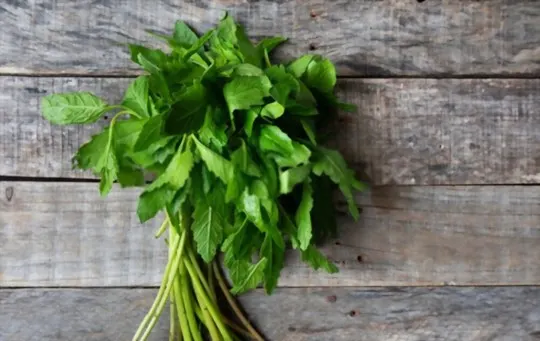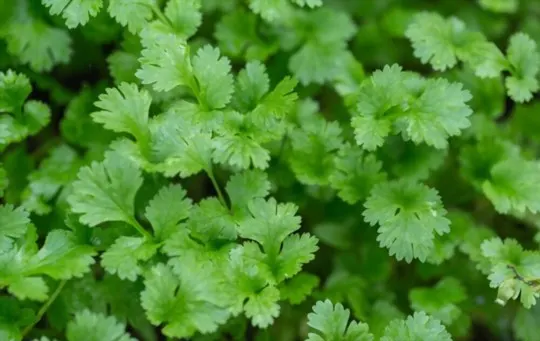Are you tired of always having to buy Mexican oregano in the store? You don’t have to anymore.
Discover 5 simple alternatives that will forever change the way you cook with oregano.
Now is the time to explore new flavors and expand your culinary arts.
What is Mexican Oregano?

Mexican oregano, also known as Mexican marjoram or Mexican wild marjoram, is an herb native to Mexico and the southwest United States.
It is a member of the mint family, which includes thyme and savory.
It has a strong, rich flavor that is slightly sweet with a hint of chili pepper-like spiciness.
It is often used in Mexican cuisine and as an alternative to regular oregano in dishes such as chili con carne and fajitas.
Mexican oregano will add flavor to almost any meal, but it can be hard to find due to its limited availability outside of Mexico and the southwestern US states.
Luckily there are some alternatives you may already have in your cupboard that you can use instead when the original just isn’t available.
5 Mexican Oregano Alternatives You Didn’t Even Know Existed
However, this flavorful herb can be difficult to find outside of specialty grocery stores.
Fortunately, there are several viable alternatives that possess similar properties and taste sensations — each with their own unique twist — so you won’t have to miss out on the flavor of Mexican oregano when you can’t find it.
1 – Marjoram

Marjoram (Origanum majorana) is a sweet, aromatic herb commonly used in Mediterranean and Middle Eastern cuisine.
Marjoram has a flavor reminiscent of Mexican oregano, but with brighter notes, making it an ideal alternative in dishes that call for oregano.
Marjoram has a mild, slightly sweet taste that is similar to oregano but less intense.
It can be used as a substitute for oregano in many Mexican dishes such as tacos, enchiladas, chili con carne and condiments such as salsa and guacamole.
Marjoram pairs particularly well with rich flavors like beef or pork, but can also be used to add milder flavors to vegetable-based dishes such as ratatouille or tomato sauces like tarragon béchamel.
Marjoram pairs wonderfully with other herbs such as bay leaves and thyme for more complex flavor profiles.
2 – Greek Oregano

Greek oregano (Origanum vulgare hirtum) is a variety of oregano most commonly used in North America.
This type has a very high essential oil content and strong flavor, making it a great substitute for Mexican oregano.
Its flavor is similar to some of the more pungent varieties of Mexican oregano, but with less citrus flavor.
Greek oregano pairs perfectly with dishes like sauces and marinades, pizza and pasta dishes, grilled meats and vegetables, salsa verde, and bean dishes.
Add it early in the cooking process to ensure its full flavor comes through in your dish.
3 – Lemon Verbena

Lemon verbena has a lovely citric aroma and a taste typically described as being lemony with slight mint overtones.
It is actually a member of the verbena family, but it has its own unique flavor.
Since it’s a bit harder to find than some other Mexican oregano alternatives, try growing plants at home and drying the leaves.
This will give you a much fresher flavor when you use lemon verbena in your dishes.
In terms of cooking applications, this herb is best when used to season fish or poultry dishes.
It is also great for marinades, salad dressings and deserts like fruit pies and cobblers for a nice lemony kick.
4 – Epazote

Epazote, also known as wormseed, Jesuit’s tea, or Mexican tea, is an herb that is found growing wild throughout Central and South America.
Similar to Mexican oregano in both smell and taste, this herb packs a strong pungent flavor that complements bean dishes beautifully.
It can be used fresh or dried and the leaves are the most flavorful part of the plant.
In Mexico it’s often added to soups, beans and sauces to impart flavor while simultaneously curbing gas production from beans.
Just a pinch is all that’s needed and it’s more delicate in flavor than Mexican oregano so keep an eye on your seasonings if you choose this powerhouse herb as your replacement.
5 – Cilantro

Cilantro is a herb that grows widely in Mexico and Central America, and is featured in a variety of Mexican dishes.
Cilantro has a tangy, citrus-like flavor that adds a delightful punch to foods.
It is also used as an aromatic and garnish due to its fragrant aroma.
As an oregano alternative, it can be added to soups, tacos, enchiladas and burritos for additional flavor without overpowering the other ingredients.
When using cilantro as an oregano substitute, remember to use only fresh leaves for the best flavor — dried cilantro lacks the same vibrant taste.
Conclusion
Ultimately, the type of oregano you choose to use should depend on the type of dish you’re creating, your own personal tastes, and what’s available in your area.
Whether you decide to buy Mexican Oregano or try one of its five alternative neighbors, rest assured that all will enhance the flavor of your Mexican or other ethnic dishes.
No matter what you decide to make for dinner tonight (or any day.
), an understanding and appreciation for the flavors that oregano can add will enhance any dish you make.
Now that you know a few alternatives to Mexican Oregano—including where they come from and how they taste—you can take everyone’s culinary experience up a notch.

5 Mexican Oregano Alternatives You Didn’t Even Know Existed
Ingredients
- 1 – Marjoram
- 2 – Greek Oregano
- 3 – Lemon Verbena
- 4 – Epazote
- 5 – Cilantro
Instructions
- Choose your preferred substitute from the list of options.
- Organize all of your ingredients.
- Use the proper substitute to cook your recipes.

Carrie is a food writer and editor with more than 15 years of experience. She has worked for some of the biggest names in the food industry, including Bon Appétit, Food & Wine, and Martha Stewart Living.
As the Editor in Chief of IntroChicago.com, Carrie oversees all of the content on the site. She also manages the team of contributing writers and editors, who help to create delicious recipes, helpful tips, and informative articles that you’ll find on the site.
A native of the Chicago area, Carrie is passionate about all things food. She loves trying new restaurants and experimenting with new recipes in her kitchen. She’s also a graduate of the Culinary Institute of America, so she knows a thing or two about food!
